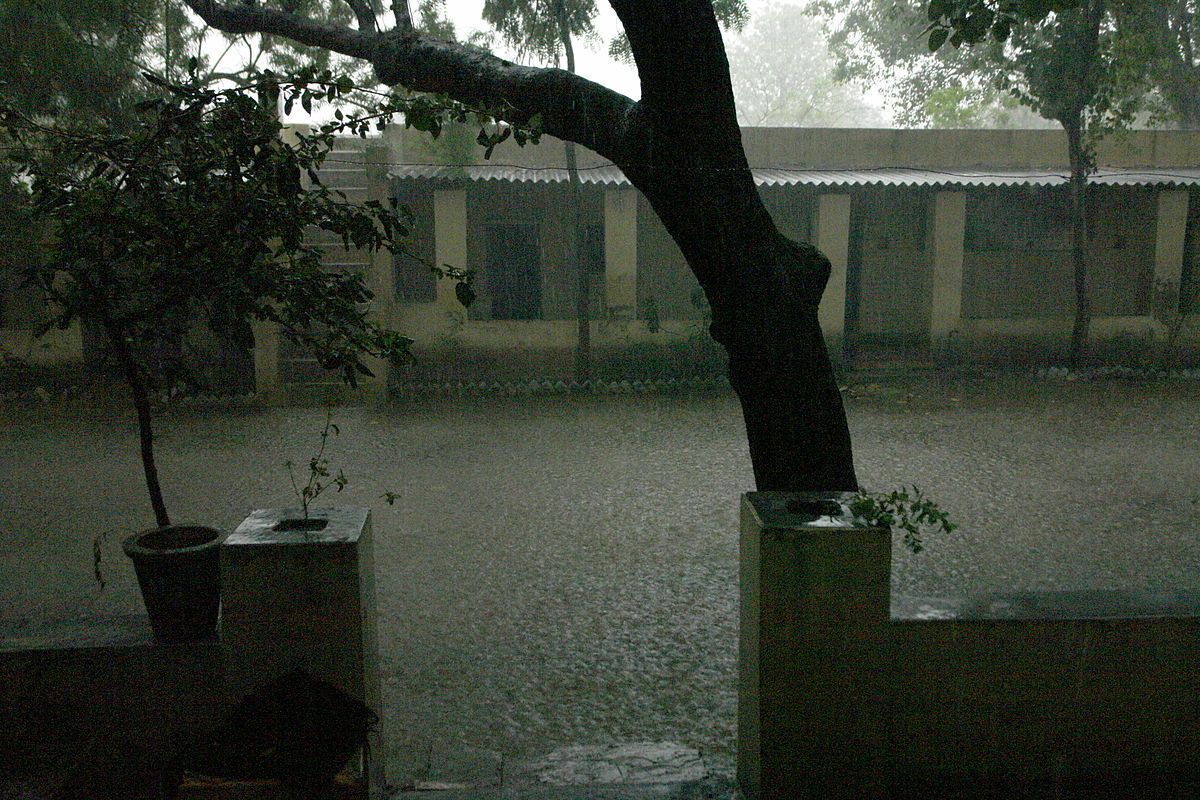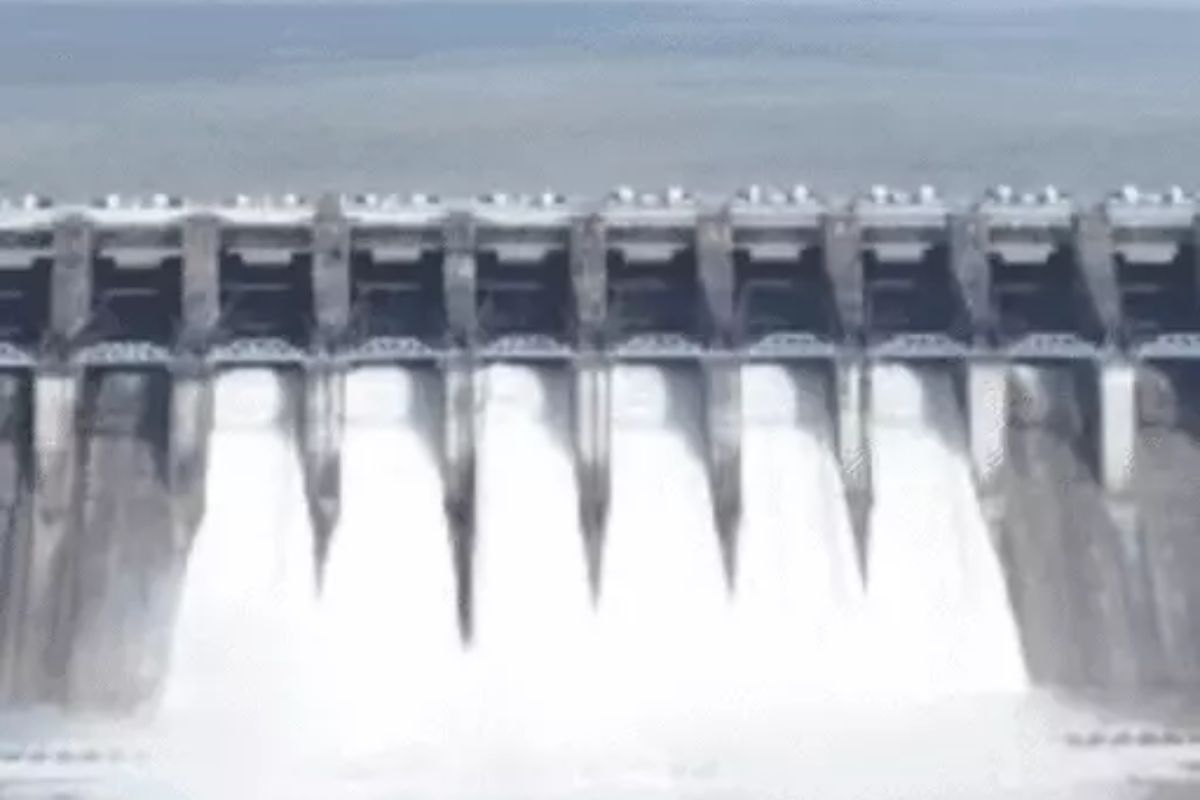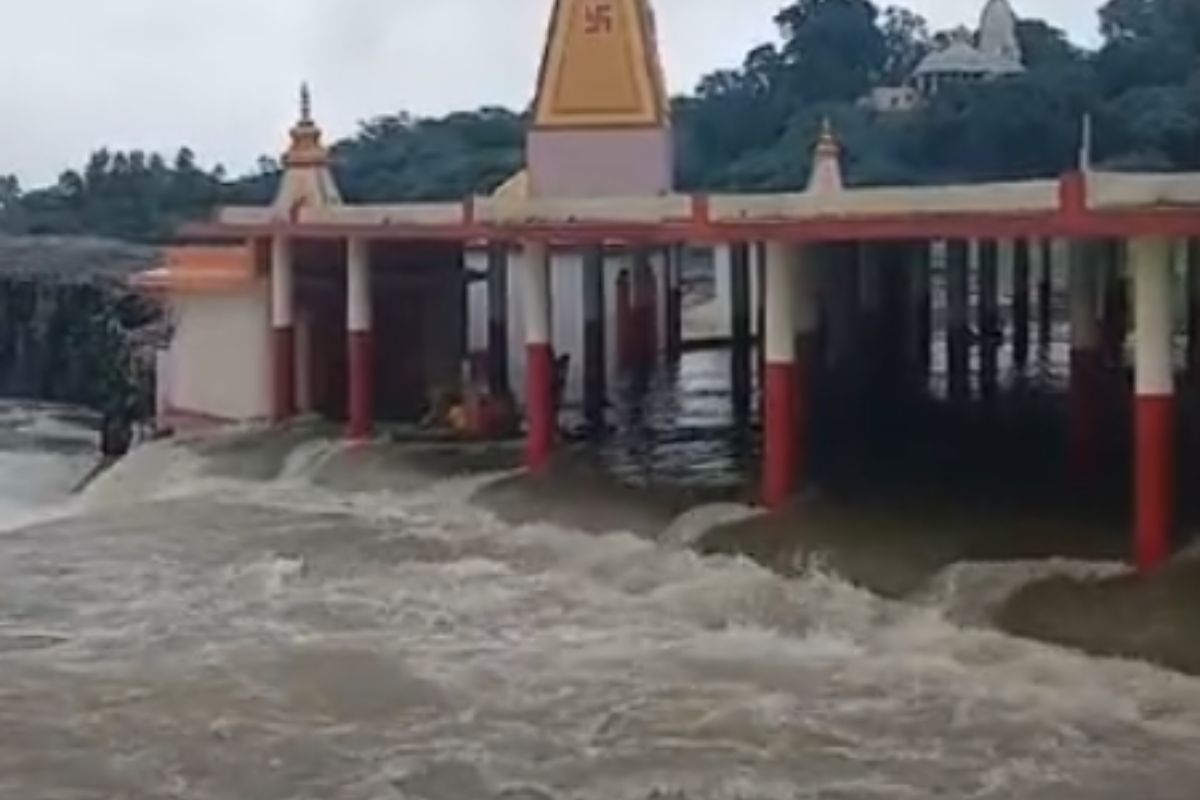The ongoing monsoon season has significantly impacted Madhya Pradesh. Within 38 days, the state has received half of the season’s rainfall, amounting to 50% of the expected total. The maximum rainfall of 31.26 inches has occurred in Seoni district. A new weather system is expected to become active from July 30, promising more rain across the state from July 31. The Indian Meteorological Department (IMD) has issued alerts for heavy rain in several districts, including Chhatarpur, Chhindwara, Seoni, Mandla, Balaghat, Dindori, and Anuppur.
Heavy monsoon rains hit Madhya Pradesh
Heavy rains caused significant flooding, especially in Shajapur, where houses and shops were inundated. Temples on the Shipra River banks in Ujjain were submerged, highlighting the extent of the flooding. In Bhopal, light rain and fog added to the wet conditions on Monday morning.
In Jabalpur, the water level of Bargi Dam has risen to 418.55 meters, leading to the opening of seven of its 21 gates on Monday afternoon. The dam’s full tank level is 422.76 meters. Two gates of Sanjay Sagar Dam in Vidisha have been opened, along with five gates of Satpura Dam in Betul and two gates of Paras Doh Dam.
Continuous rain has led to tragic incidents. In Ujjain, a house collapse resulted in the death of Raisa Bi and injuries to her son Haider Nagori. The roof of their dilapidated house in Topkhana collapsed at 4 pm on Monday, following four days of leaking due to the rain. Haider, who works with aluminum, has been admitted to the district hospital.

Khargone got 83 mm (3.4 inches) from 8:30 am to 5:30 pm on Monday. Khandwa got 2 inches of rain, while Ratlam got over half an inch. Other districts, including Betul, Dhar, Narmadapuram, Indore, Ujjain, Chhindwara, Mandla, Narsinghpur, Sagar, and Shajapur, had light rain.
Dams’ water levels rise significantly
The weather department IMD has predicted heavy rains with lightning in Omkareshwar, Khandwa, Narsinghpur, South Betul, Maheshwar, and Bawangaja in the next few hours. Moderate rain with thunder is expected in Mauganj, Mandsaur, Mandu, Harda, Agar-Malwa, and Rajgarh. Light rain with thunder is predicted in Rewa, Burhanpur, Pachmarhi, Umaria, Shahdol, Khajuraho, Panna, Indore, Alirajpur, Jhabua, and Sagar.
Continuous rains have raised water levels in various dams across Madhya Pradesh. The Kolar Dam in Sehore has a tank level of 462.2 meters, with the current water level at 458.92 meters, leaving 3.28 meters empty. The Bansagar Dam in Shahdol, Gandhisagar Dam in Mandsaur, Indira Sagar Dam in Khandwa, and several other dams have seen significant rises in their water levels, necessitating the opening of gates to manage the inflow.
In Sendhwa of Barwani, the largest reservoir, Ralavati pond, overflowed after heavy overnight rain on Sunday, causing the water to flow from the pond’s waste weir and raising the river’s river’s water level. The administrative staff has issued warnings in the downstream villages for safety.

Improved rainfall has brought relief to Madhya Pradesh’s agricultural sector. The monsoon season, from June to September, is crucial for the state’s crops. The state has received 447.4 mm of rain, surpassing the normal rainfall of 418.4 mm for the period, resulting in a 7% surplus. Meteorological officials state that 20% less or more rainfall is normal, but good rainfall is essential to fill the gap in areas with more than 20% rain deficit.
The western part of the state, including Bhopal, Indore, Ujjain, Narmadapuram, and Gwalior-Chambal divisions, has received 10% more rain than the average. In contrast, the eastern part, including Rewa, Sagar, Jabalpur, and Shahdol divisions, has received 4% more rain. Districts like Seoni, Dindori, Chhindwara, Mandla, and Balaghat in the eastern part have recorded the highest rainfall.
Rain relief, but deficits remain
Despite overall improvement, The rain graph further improved the rain deficit dists on July 25 were Rewa, Satna, Sidhi, Singruli, Umaria, Harda, Jhabua and Mandsaur. As of now, On Sunday, only Rewa, Satna, Singrauli, Umaria and Harda were the dists that were left rain deficit.
The rains have brought relief to Madhya Pradesh, improving water levels in reservoirs and supporting agriculture. However, managing flood risks and ensuring safety in low-lying areas remain challenges. The IMD’s forecast of heavy rains requires continued vigilance and precautionary measures.

In Bhopal, the state capital, the city received 590.9 mm of rain from June 1 to Sunday, against the normal rainfall of 436 mm, resulting in a 36% surplus. The monsoon entered Madhya Pradesh on June 21, with the onset of the southwest monsoon declared over Bhopal on June 23. By June 28, the monsoon had covered the entire state.
According to the Meteorological Department, 990 mm of rainfall is considered normal for Madhya Pradesh, while 1090 mm is the yearly average for Bhopal. From June 1 to Sunday, the state capital received 590.9 mm of rain, compared to the normal 436 mm for this period, resulting in a 36% surplus.
Monsoon entered MP on June 21 while onset of the south-west monsoon was declared in Bhopal on June 23. By June 28, south-west monsoon had covered the entire MP.
Continued rains, and extreme weather impacts
Experts predict continued rainfall in the state, with the monsoon expected to be close to 110% of normal levels. Meteorological department officials attribute the good monsoon to less snowfall in the Himalayan region, which has positively impacted it.
Madhya Pradesh has faced extreme weather events in recent years, significantly impacting human lives, livestock, and property. According to the 2023 CSE report, the state reported 138 extreme weather events. In 2023, 97 human lives and 246 cattle were lost, with 1,169 houses damaged.
The economic impact of climate change-related events has been substantial. The World Meteorological Department’s Climate of Asia 2020 report indicated that India lost $87 billion due to these events. Madhya Pradesh, one of the most affected states, has faced significant economic challenges.
In recent years, India has experienced an average of $90 billion in annual economic losses due to climate-related events. These losses include physical damage, financial losses, and loss of life. In 2023, India experienced seasonal floods that caused around $300 million in economic losses and killed at least 2,653 people.
Keep Reading
Lightning strikes leave two children without their mother in West Bengal
Lightning strikes in Odisha: Do palm trees really protect against lightning strikes?
In Jammu, lightning strikes kill livestock, compensation not adequate say shepherds
Indigenous communities in J&K struggle with increasing lightning risks to livelihoods
Follow Ground Report for Environmental News from India. Connect with us on Facebook, Twitter, Koo App, Instagram, Whatsapp and YouTube. Write us at GReport2018@gmail.com and subscribe to our free newsletter.
Don’t forget to check out our climate glossary, it helps in learning difficult environmental terms in simple language.







